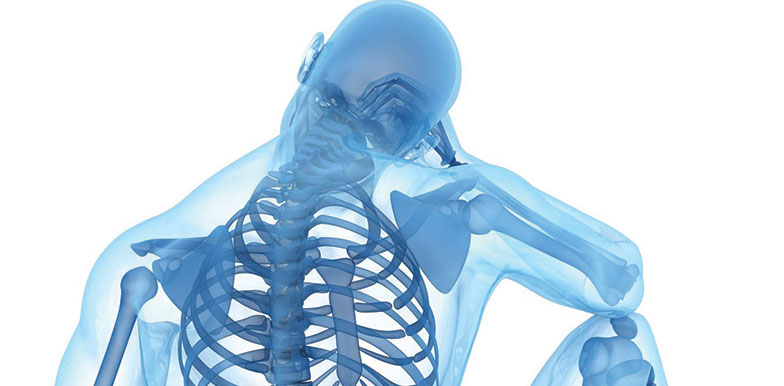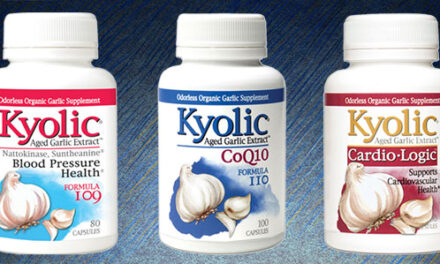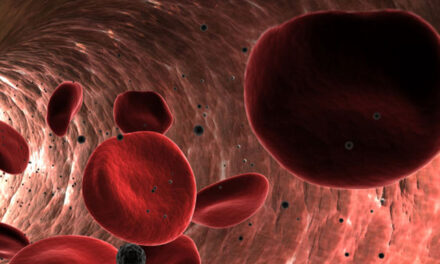According to the U.S. Department of Agriculture (USDA), Americans have failed to meet the RDA for several key nutrients, including calcium, magnesium, and zinc.1 Other research on both athletes and sedentary individuals indicated that their food intake was RDA-deficient in more than one-third of the seven minerals analyzed.2 In addition, research done by the USDA has shown that over a period of about 90 years, a 3–7 percent decrease in magnesium, zinc and potassium levels occurred in our food supply.3 Furthermore, studies from various sources demonstrated that growing conditions, agricultural technologies and nutrient content of the soil can reduce some minerals in some crops by as much as 300 percent.4,5,6,7,8
This data clearly indicates that Americans are not getting sufficient minerals in their diet, which can have a number of health implications. One such implication is the loss of bone mineral density, a common occurrence as we age, and more prevalent in women than men.9 Consequently, supplementation with mineral supplements can help to fill the missing mineral gap and promote healthy bone density. In doing so, it is important to note that calcium is not the only nutrient necessary for helping to build bone density. The following text will elucidate some of the key nutrients necessary for healthy bone density, including calcium.
Potassium
Potassium is necessary to help maintain normal osmotic pressure of body fluids, the acid-base balance of the body, and for transmission of nerve impulses and muscle contraction. In addition, at least four cross-sectional studies have reported significant positive associations between dietary potassium intake and bone mineral density (BMD) in populations of premenopausal, perimenopausal, and postmenopausal women as well as elderly men.10,11,12 In studies on postmenopausal women, supplementation with potassium decreased urinary acid and calcium excretion, resulting in increased biomarkers of bone formation and decreased biomarkers of bone resorption.13 Other studies have reported that supplementation with potassium decreased urinary acid excretion and biomarkers of bone resorption in postmenopausal women.14
Calcium
Calcium is necessary for the formation of bones and teeth, blood clotting, and for normal muscle and nerve activity. Adequate calcium, along with regular exercise and a healthy diet, helps maintain good bone health, and may help teen and young adult women reduce their high risk for osteoporosis later in life.15,16,17 Furthermore, daily calcium supplementation has been shown to effectively slow bone loss.18,19,20,21 Calcium’s role in the prevention and treatment of osteoporosis is also well established.22 Research overwhelmingly supports the use of calcium supplementation, alone or in combination with other therapies, for slowing or stopping the progression of osteoporosis.23 As a matter of fact, FDA-approved therapy for the treatment of postmenopausal osteoporosis includes calcium supplementation.24 In addition, osteoporosis can lead to an increased incidence of fractures. Research has clearly shown that calcium supplementation can help to reduce the risk of, and even prevent fractures in osteoporosis.25,26,27,28
Regarding the types of calcium, hydroxyapatite, calcium citrate, and calcium malate are good choices. Research using calcium citrate/malate has demonstrated a high level of absorption and an ability to effectively promote the consolidation and maintenance of bone mass in adults.29
In addition, some research has shown that calcium citrate has greater absorption than other forms such as calcium gluconolactate and carbonate.30,31,32 Then, there is hydroxyapatite (HA), a whole bone concentrate that provides calcium, phosphorus and a variety of other naturally occurring bone nutrients. Research indicates that women who use HA gain significant cortical bone thickness as compared to women who used calcium alone (as calcium gluconate).33
Iodine
Iodine is an essential component of thyroid hormones, which regulate metabolic rate and other functions. Thyroid hormones have many interactions with the skeleton, and play a role in bone growth and development in the fetal growth plate and the normal mechanisms of mature bone remodeling.34
Magnesium
Magnesium is necessary for normal functioning of muscle and nervous tissue and participates in the formation of bones and teeth.35,36 Given its role in bone health, it is not surprising that people with osteoporosis were reported to be at high risk for magnesium malabsorption.37 Furthermore, bone38 and blood levels of magnesium have also been reported to be low in people with osteoporosis.39 Research has shown that supplementing with magnesium reduces indications of bone loss.40 Other research has shown that supplementing with magnesium daily also stopped bone loss, and even increased bone mass in twenty-seven of thirty-one people with osteoporosis in a two-year study.41
Zinc
Zinc is a versatile trace mineral required as a cofactor by more than 100 enzymes in every organ of the body. It is also associated with the hormone insulin, involved in making genetic material and proteins, immune reactions, transport of vitamin A, taste perception, wound healing, the making of sperm, and the normal development of the fetus. The highest concentrations of zinc in the body are in bone, the prostate gland, and the eyes.42
Low blood and bone levels of zinc have been reported in people with osteoporosis.43 Also, research indicates that urinary loss of zinc may be high in people with osteoporosis.44 Other research found that men consuming a good amount of zinc in their diet had almost half the risk of osteoporosis-related fractures compared with those consuming significantly less dietary zinc.45 Furthermore, in one study the use of supplemental zinc with calcium was more effective than calcium supplementation by itself in protecting against the loss of bone density.46
Selenium
Selenium functions as a constituent of the antioxidant enzyme glutathione peroxidase, which detoxifies products of oxidized fats, and is found in the red blood cells. Selenium plays a fundamental role in regulating thyroid and other functions of the human body including reproduction, autoimmunity, glucose metabolism and bone metabolism.47 Specifically, it is the selenoproteins that are involved in bone metabolism.48
Copper
Copper is necessary with iron for the formation of red blood cells and nerve fibers. It is also necessary in the formation of the hair and skin pigment melanin. Furthermore, copper is needed for normal bone synthesis, and one study reported that daily copper prevented bone loss.49 The potential importance of copper for people with osteoporosis requires further research, although consumption of some copper can still be recommended at this time at least for general nutritional purposes.
Manganese
Manganese is an activator of enzymes (cofactor), and is involved in fatty acid metabolism and protein synthesis. It also plays a role in bone health.50 Unpublished research indicated that manganese deficiency occurred in a small group of women with osteoporosis,51 and published research using a combination of minerals including manganese was reported to halt bone loss.52
Chromium
Chromium participates in glucose metabolism by enhancing the effects of insulin.53 Since some data suggest that insulin is a potential anabolic agent in bone, this insulin-enhancing effect of chromium may contribute to bone health.54
Molybdenum
In humans, molybdenum is known to function as a cofactor for three enzymes: sulfite oxidase, xanthine oxidase, and aldehyde oxidase. Sulfite oxidase catalyzes the transformation of sulfite to sulfate, a reaction that is necessary for the metabolism of sulfur-containing amino acids (methionine and cysteine). Xanthine oxidase catalyzes the breakdown of nucleotides (precursors to DNA and RNA) to form uric acid, which contributes to the plasma antioxidant capacity of the blood. Aldehyde oxidase and xanthine oxidase catalyze hydroxylation reactions that involve a number of different molecules with similar chemical structures. Xanthine oxidase and aldehyde oxidase also play a role in the metabolism of drugs and toxins.55
Silica
Silica has been recognized as playing a significant role in bone formation.56 Also, supplementation with silica has increased bone formation in animal research.57 In human research, supplementation with silica increased bone mineral density in a group of eight women with osteoporosis.58 Bamboo stem extract is a rich source of silica, and is used in this formulation.
Boron
Chronically low intakes of the trace mineral boron may predispose people to osteoporosis.59 Changes caused by boron deprivation include reduced blood levels of calcium, as well as an increase in urinary excretion of calcium. Boron deprivation causes changes similar to those seen in women with postmenopausal osteoporosis, and this mineral is needed to prevent the excessive bone loss, which often occurs in postmenopausal women and older men.60 In addition, studies have reported possible improvements in bone mineral density in women who were supplemented with boron.61 For example, research has found that supplementation with 3 mg daily of the boron reduced urinary loss of both calcium and magnesium.62
Vanadium
Vanadium is a trace mineral that appears to be important in normal bone growth and as a cofactor for various enzyme reactions. The highest concentrations of vanadium are found in the liver, kidney, and bone.63 Some evidence suggests that vanadium can mimic the actions of insulin, possibly by causing phosphorylation of insulin receptor proteins.64 Since some data suggest that insulin is a potential anabolic agent in bone, this insulin-mimicking action of vanadium may further contribute to bone health.65
References:
- Moshfegh AJ, Tippett KS, Borrud LG, Perloff BP. Food and Nutrient Intakes by Individuals in the United States, by Sex and Age, 1994-96. Agriculture Research Service; http://www.nalusda.gov/ttic/tektran/data/000009/29/0000092962.html.
- Misner B. Food Alone May Not Provide Sufficient Micronutrients for Preventing Deficiency. Journal of the International Society of Sports Nutrition 2006;3(1):51-55.
- Gerrior, S. and Bente, L. 1997. Nutrient Content of the U.S. Food Supply, 1909-94. U.S. Department of Agriculture, Center for Nutrition Policy and Promotion. Home Economics Report No. 53.
- USDA National Nutrient Database for Standard Reference, Release 15 , USDA Nutrient Data Laboratory, Last updated December 11, 2002; http://www.nal.usda.gov/fnic/foodcomp/.
- Barta DJ, Tibbitts TW, Barta DJ. Calcium localization and tipburn development in lettuce leaves during early enlargement. Journal of the American Society for Horticultural Science 2000;125(3):294-8
- McKeehen JD, Smart DJ, Mackowiak CL, et al. Effect of CO2 levels on nutrient content of lettuce and radish. Advances in space research: the official journal of the Committee on Space Research 1996; 18(4-5):85-92.
- Kubota J, Allaway WH. Geographic distribution of trace element problems. In J.J.Mortvedt, ed., Micronutrients in Agriculture: Proceedings of Symposium held at Muscle Shoals, Alabama, Madison, WI: Soil Science Society of America; 1972:525–554.
- Composition of Foods: Raw, Processed, Prepared. USDA National Nutrient Database for Standard Reference, Release 15. December 2002. U.S. Department of Agriculture, Agricultural Research Service, Beltsville Human Nutrition Research Center, Nutrient Data Laboratory.
- Pietschmann P, Rauner M, Sipos W, Kerschan-Schindl K. Osteoporosis: an age-related and gender-specific disease—a minireview. Gerontology 2008;55(1):3-12.
- New SA, Bolton-Smith C, Grubb DA, Reid DM. Nutritional influences on bone mineral density: a cross-sectional study in premenopausal women. Am J Clin Nutr 1997;65(6):1831–9.
- New SA, Robins SP, Campbell MK, et al. Dietary influences on bone mass and bone metabolism: further evidence of a positive link between fruit and vegetable consumption and bone health? Am J Clin Nutr 2000;71(1):142–51.
- Tucker KL, Hannan MT, Chen H, Cupples LA, Wilson PW, Kiel DP. Potassium, magnesium, and fruit and vegetable intakes are associated with greater bone mineral density in elderly men and women. Am J Clin Nutr 1999;69(4):727–36.
- Sebastian A, Harris ST, Ottaway JH, Todd KM, Morris RC, Jr. Improved mineral balance and skeletal metabolism in postmenopausal women treated with potassium bicarbonate. N Engl J Med 1994;330(25):1776–81.
- Marangella M, Di Stefano M, Casalis S, Berutti S, D’Amelio P, Isaia GC. Effects of potassium citrate supplementation on bone metabolism. Calcif Tissue Int 2004;74(4):330–35.
- Tortora G, Anagnostakos N. Principles of Anatomy And Physiology. New York: Harper & Row Publishers; 1981: 655.
- Whitney E, Rolfes S. “Understanding Nutrition,” sixth edition. St. Paul: West Publishing, 1983:384–390.
- Rules and Regulations. Federal Register 1993; Vol. 58, No. 3, pp. 2677.
- Reid IR. Pharmacological management of osteoporosis in postmenopausal women: a comparative review. Drugs & Aging 1999; 15(5):349–63.
- Prince R. The calcium controversy revisited: implications of new data. Medical Journal of Australia 1993; 159(6):404–7.
- Dawson-Hughes B. Calcium supplementation and bone loss: a review of controlled clinical trials. American Journal Of Clinical Nutrition 1991; 54(1 Suppl):274S.
- Cumming RG. Calcium intake and bone mass: a quantitative review of the evidence. Calcified Tissue International 1990; 47(4):194-201.
- Whitney E, Cataldo C, Rolfes S. Understanding Normal and Clinical Nutrition. Belmont, California: Wadsworth Publishing; 1998: 426-433, 439–448.
- Laulert L, Almeida M de A, Araujo VG, Francisco CM. [Osteoporosis: a silent epidemic which will turn public] Osteoporose:a epidemia silenciosa que devese tornar publica. Revista brasileira de enfermagem 1995; 48(2):161–7.
- Wisneski LA. Clinical management of postmenopausal osteoporosis. Southern Medical Journal 1992; 85(8):832–9.
- Blank RD, Bockman RS. A review of clinical trials of therapies for osteoporosis using fracture as an end point. Journal Of Clinical Densitometry 1999; 2(4):435–52.
- Scheiber LB 2nd, Torregrosa L. Evaluation and treatment of postmenopausal osteoporosis. Seminars in arthritis and rheumatism 1998; 27(4):245–61.
- Cumming RG, Nevitt MC. Calcium for prevention of osteoporotic fractures in postmenopausal women. Journal of Bone and Mineral Research 1997; 12(9):1321–9.
- Wark JD. Osteoporotic fractures: background and prevention strategies. Maturitas 1996; 23(2):193–207.
- Reinwald S, Weaver CM, Kester JJ. The health benefits of calcium citrate malate: a review of the supporting science. Adv Food Nutr Res 2008;54:219–346.
- Hansen C, Werner E, Erbes HJ, Larrat V, Kaltwasser JP. Intestinal calcium absorption from different calcium preparations: influence of anion and solubility. Osteoporos Int 1996;6:386–93.
- Gonnelli S, Cepollaro C, Camporeale A, et al. Acute biochemical variations induced by two different calcium salts in healthy perimenopausal women. Calcif Tissue Int 1995;57(3):175–7.
- Harvey JA, Zobitz MM, Pak CY. Dose dependency of calcium absorption: a comparison of calcium carbonate and calcium citrate. J Bone Miner Res (1988) 3(3):253–8.
- Epstein O, Y Kato, R Dick, and S Sherlock. Vitamin D, hydroxyapatite, and calcium gluconate in treatment of cortical bone thinning in postmenopausal women with primary biliary cirrhosis. Am J Clin Nutr 1982;36:426–30.
- Wexler JA, Sharretts J. Thyroid and bone. Endocrinol Metab Clin North Am 2007;36(3):673–705.
- Tortora G, Anagnostakos N. “Principles of anatomy and physiology.” New York: Harper & Row Publishers; 1981: 655.
- Wilson ED, Fisher KH, Garcia PA. “Principles of Nutrition,” fourth edition. New York: John Wiley & Sons, New York; 1979:274.
- Cohen L, Laor A, Kitzes R. Magnesium malabsorption in postmenopausal osteoporosis. Magnesium 1983; 2:139–43.
- Cohen L, Kitzes R. Infrared spectroscopy and magnesium content of bone mineral in osteoporotic women. Isr J Med Sci 1981;17:1123–25.
- Geinster JY, Strauss L, Deroisy R, et al. Preliminary report of decreased serum magnesium in postmenopausal osteoporosis. Magnesium 1989; 8:106–9.
- Dimai H-PPorta S, Wirnsberger G, et al. Daily oral magnesium supplementation suppresses bone turnover in young adult males. J Clin Endocrinol Metab 1998; 83:2742–48.
- Stendig-Lindberg G, Tepper R, Leichter I. bone density in a two year controlled trial of peroral magnesium in osteoporosis. Magnesium Res (1993) 6:155–63.
- Whitney E, Cataldo C, Rolfes S. “Understanding Normal and Clinical Nutrition,” Fifth Edition. Belmont, California:West/ Wadsworth; 1998:463–8.
- Sahap Atik O. Zinc and senile osteoporosis. J Am Geriatr Soc 1983; 31:790–91.
- Relea P, et al. Zinc, biochemical markers of nutrition and type 1 osteoporosis. Age Ageing (1995) 24:303–7.
- Elmståhl S, et al. Increased Incidence of Fractures in Middleaged and Elderly Men with Low Intakes of Phosphorus and Zinc. Osteoporos Int 1998; 8:333–40.
- Strause L, Saltman P, Smith KT, et al. Spinal bone loss in postmenopausal women supplemented with calcium and trace minerals. J Nutr 1994; 124:1060–4.
- Kaprara A, Krassas GE. Selenium and thyroidal function; the role of immunoassays. Hell J Nucl Med 2006;9(3):195–203.
- Köhrle J, Jakob F, Contempré B, Dumont JE. Selenium, the thyroid, and the endocrine system. Endocr Rev 2005;26(7):944–84.
- Eaton-Evans J, McIlrath EM, Jackson WE, et al. Copper supplementation and bone-mineral density in middle-aged women. Proc Nutr Soc 1995;54:191A.
- Gold M. Basketball bones. Science 1980; 80:101–2. 51. Raloff J. Reasons for boning up on manganese. Science News 1986;27:199.
- Strause L, Saltman P, Smith KT, et al. Spinal bone loss in postmenopausal women supplemented with calcium and trace minerals. J Nutr 1994;124:1060–4.
- Food and Nutrition Board, Institute of Medicine. Chromium. Dietary reference intakes for vitamin A, vitamin K, boron, chromium, copper, iodine, iron, manganese, molybdenum, nickel, silicon, vanadium, and zinc. Washington, D.C.: National Academy Press; 2001:197–223.
- Thrailkill KM, Lumpkin CK Jr, Bunn RC, Kemp SF, Fowlkes JL. Is insulin an anabolic agent in bone? Dissecting the diabetic bone for clues. Am J Physiol Endocrinol Metab 2005;289(5):E735–45.
- Eckhert C. Other trace elements In: Shils ME, Shike M, Ross AC, Caballero B, Cousins RJ, eds. “Modern Nutrition in Health and Disease.” 10th ed. Philadelphia: Lippincott, Williams & Wilkins; 2006:338–350.
- Carlisle EM. Silicon localization and calcification in developing bone. Fed Proc 1969;28:374.
- Hott M, de Pollak C, Modrowski D, Marie PJ. Short-term effects of organic silicon on trabecular bone in mature ovariectamized rats. Calcif Tissue Int 1993;53:174–9.
- Eisinger J, Clairet D. Effects of silicon, fluoride, etidronate and magnesium on bone mineral density: a retrospective study. Magnes Res 1993;6:247–9.
- Bunker VW. The role of nutrition in osteoporosis. British Journal Of Biomedical Science 1994; 51(3):228–40.
- Nielsen FH. Studies on the relationship between boron and magnesium, which possibly effects the formation and maintenance of bones. Magnesium And Trace Elements 1990; 9(2):61–9.
- Volpe SL, Taper LJ, Meacham S. The relationship between boron and magnesium status and bone mineral density in the human: a review. Magnesium Research 1993; 6(3):291–6.
- Nielson FH, Hunt CD, Mullen LM, Hunt JR. Effect of dietary boron on mineral, estrogen, and testosterone metabolism in postmenopausal women. FASEB J 1987;1:394–7.
- Food and Nutrition Board, Institute of Medicine. “Dietary Reference Intakes for Vitamin A, Vitamin K, Arsenic, Boron, Chromium, Copper, Iodine, Iron, Manganese, Molybdenum, Nickel, Silicon, Vanadium, and Zinc.” Washington, DC: National Academy Press, 2002. Available at: www.nap.edu/books/0309072794/html.
- Harland BF, Harden-Williams BA. Is vanadium of human nutritional importance yet? J Am Diet Assoc 1994;94:891–4.
- Thrailkill KM, Lumpkin CK Jr, Bunn RC, Kemp SF, Fowlkes JL. Is insulin an anabolic agent in bone? Dissecting the diabetic bone for clues. Am J Physiol Endocrinol Metab 2005;289(5):E735–45.











